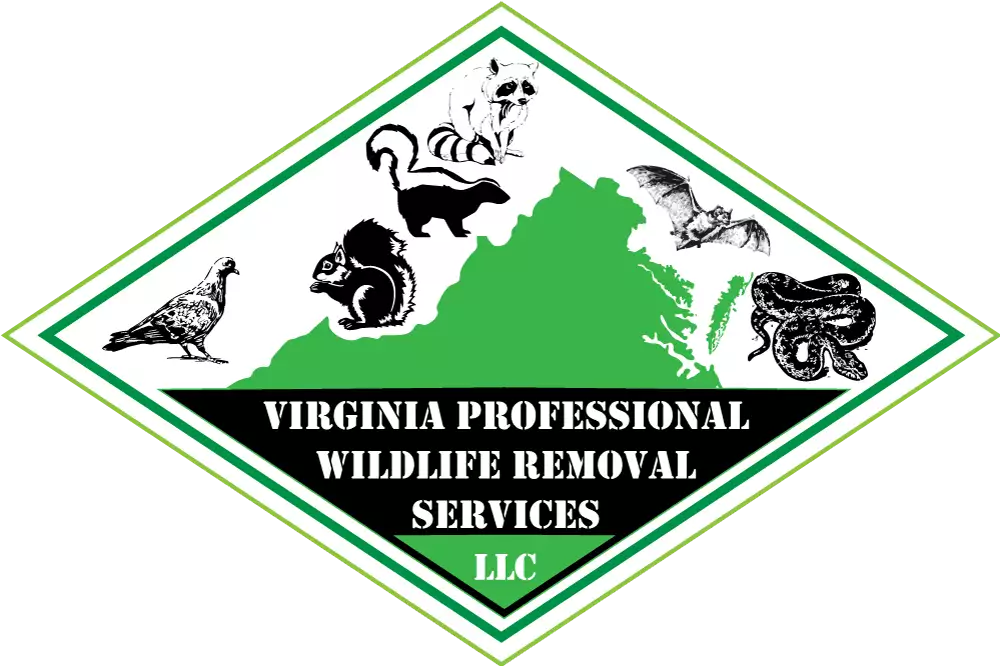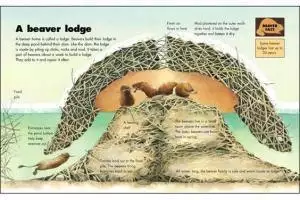Beaver Removal & Trapping
Virginia Professional Wildlife Removal Services, LLC.
A full-service animal wildlife trapping, removal and pest control company – Licensed and Insured!

Beaver Removal & Trapping
Virginia Professional Wildlife Removal Services, LLC.
A full-service animal wildlife trapping, removal and pest control company – Licensed and Insured!

Virginia Professional Wildlife Removal Services, LLC | Licensed & Insured
Providing Residential & Commercial Beaver Removal
Beaver Removal & Control Services: Protect Your Property and Preserve Natural Habitats
Welcome to our Beaver Removal Services page. Our company is dedicated to helping homeowners, business owners, and municipalities handle beaver issues effectively and humanely. When left unchecked, beavers can cause significant damage to property and the environment by building dams and lodges using a variety of building materials, including trees, shrubs, and other vegetation. The resulting blockages can lead to flooding, water contamination, and the destruction of other habitats.
We’re experts in beaver removal and control. Beavers are essential to our ecosystem, but they can sometimes damage our infrastructure. If you’ve got beavers causing problems on your property, we’re here to help.
Our Beaver Removal Approach
Our approach to beaver removal is comprehensive and involves multiple stages:
- Assessment: We first conduct an on-site assessment to understand the extent of the beaver issue and its impact on the area. We examine the materials used in the construction of their dams and lodges, such as sticks, logs, and mud.
- Humane Removal: Once we have a clear understanding of the situation, we use humane trapping methods to remove the beavers from the affected area without causing additional damage to properties.
- Dismantle Dams and Lodges: After the beavers have been relocated, we can provide suggestions to dismantle their dams and lodges to restore natural water flow and prevent further issues. This process is carried out carefully to minimize impact on the ecosystem.
- Debris Removal: In the final stage of our beaver removal process, we can provide suggestions to remove all the building materials and debris left behind from the beaver dams and lodges. Many people utilize a wood chipper to efficiently break down larger pieces of wood, which can then be recycled or used as mulch.
- Prevention Measures: Lastly, we may advise and implement preventive measures to reduce the likelihood of future beaver infestations. These may include installing protective barriers, modifying landscaping to be less attractive to beavers, and ongoing monitoring.
Sustainable Practices
We understand the importance of maintaining a balanced ecosystem and strive to carry out all beaver removal services with the utmost respect for the environment. We employ sustainable practices that ensure the safety and well-being of both the beavers and the surrounding habitat.
Contact Us Today
If you are experiencing beaver-related issues on your property or in your municipality, please don’t hesitate to contact us. Our experienced team is ready to provide you with effective, humane, and sustainable solutions for beaver removal and prevention.
Contact us today to schedule an assessment and let us help you address your beaver issues with the utmost professionalism and care.
Beaver Removal Services
Got a beaver issue? We’re the solution you need. Our services are designed for safe and humane beaver removal. With our experienced team, we ensure fast and effective beaver extraction.
Watch this video on our beaver removal services – beaver caught in a live-catch trap .
Beaver Control Services
Beyond just removal, we also specialize in beaver control. Want to stop beaver-related damages? We’re on it. Using methods like fencing and water management, we aim to protect your property from any beaver harm.
Watch this video of our beaver removal services showing a beaver caught in a live-catch trap.
Service Area
We offer our top-notch beaver removal services all across Virginia. Whether you’re in Afton or Wyndham, we’ve got your back.
Why Choose Us
Our team is the go-to for reliable beaver management. With years of experience, we guarantee top-tier service. We’re passionate about humane methods, fair pricing, and excellent customer care. Facing beaver issues? Contact us. Our dedicated team is ready to serve.
How to Get Rid of Beavers
In Virginia and facing beaver troubles? Here’s a quick guide:
- Exclusion: Prevent beavers from entering your property by using fences or mesh.
- Trapping: Set up traps near beaver areas but always check them and follow local regulations.
- Repellents: While some recommend sprays and devices, they might not always work.
- Habitat Modification: Change the beaver’s preferred environment. This could include clearing vegetation or adding barriers.
- Professional Help: Need assistance? That’s why we’re here! With our expertise, we manage beavers safely.
Remember, always follow local rules and prioritize safety.
Signs of Beaver Activity
Wondering how to identify beaver presence? Here’s how:
- Dams and Lodges: These structures near water bodies are clear beaver markers.
- Tree Damage: Trees chewed at the base with pointed stumps are often beaver work.
- Canals: Channels near water sources show active beaver areas.
- Waterlogged Trees: Result of beaver dams causing floods.
- Footprints: Look for their unique webbed footprints near water.
- Fresh Timber: Stacked wood or stripped bark indicates beaver activity.
While beavers can bring new life to an area, they might also cause disruptions. Always observe them from a distance and respect their habitats.
How to Trap a Beaver Ethically
If you must trap beavers, do it responsibly. Always check local laws and get proper training before proceeding. If you decide trapping is needed:
- Local Regulations: Know your local rules.
- Choosing the Trap: Use live traps suitable for beavers.
- Trap Placement: Set up the trap in areas with visible beaver activity.
- Bait Selection: Beavers love foods like apples and corn. Secure them inside the trap.
- Monitor the Trap: Regularly check the trap. If you catch a beaver, handle and release it safely and appropriately – relocating beaver is not allowed in Virginia.
Remember, always prioritize your safety and the beaver’s well-being. Unsure? Consult experts. Trapping should be the last option.
Beaver Baits: An Insight
Beavers, hunted for their fur and meat, are often lured using specific baits. Each bait possesses its strengths and limitations. This article explores some top choices and explains their effectiveness:
- Castor Oil: Derived from beavers, this oil emulates the scent of a beaver’s natural habitat, making it a top choice. You can purchase and apply castor oil in liquid form either directly to a lure or as a scent trail.
- Fresh Wood: The scent of fresh wood, from branches or trees, is enticing to beavers. For maximum effect, use wood from near the beaver’s home or common route.
- Apples and Carrots: Their sweet aroma is almost irresistible to beavers. Strategically place these near the beaver’s dwelling or their known paths.
- Marshmallows: Surprisingly, the sweetness and strong scent of marshmallows work wonders as beaver bait. You can place them on bait sticks or spread them near known beaver territories.
- Anise Oil: This oil’s powerful licorice-like aroma is another great choice. Similar to castor oil, you can apply anise oil to lures or establish a scent trail.
When selecting bait, always factor in the beaver’s natural environment and preferences. Scents that mimic their habitat or favorite foods can be particularly effective.
Beaver Exclusion Techniques
To prevent beavers from causing harm, consider the following beaver exclusion strategies:
- Fencing: This is a reliable method to deter beavers. Erect a wire mesh fence around the area you wish to protect, making sure it extends several feet above and below the ground to prevent both climbing and burrowing.
- Trapping: While it’s a direct approach, it can be effective. However, always make sure to adhere to local regulations regarding the trapping and relocation of beavers.
- Tree Protection: Since beavers often damage trees by chewing, wrapping the base of trees with metal mesh can deter them. Alternatively, applying paint or grease to the tree’s base can also repel beavers.
- Water Level Management: As beavers build dams to control water levels, managing these levels in your area can help deter them. Implement devices like culverts or pipes to maintain water flow and appropriate levels.
In essence, employing beaver exclusion techniques is vital to protect your assets. Your choice of method should cater to your specific challenge. With the right approach, both your property and the surrounding ecosystem will coexist harmoniously.
Beaver Quick Facts
Beavers, North America’s largest rodents, are renowned for their environmental adaptations and engineering prowess. Found everywhere from Alaska to Florida, they play a vital role in ecosystems. Here’s a brief look at these fascinating creatures:
- Master Builders: Using mud, sticks, and logs, beavers craft dams up to 10 feet high and 100 feet long, creating habitats for various species.
- Unique Dentition: Their continuously growing, sharp front teeth are tools for gnawing trees, crucial for constructing dams and lodges.
- Adapted for Water: With webbed hind feet and a paddle tail, beavers are adept swimmers. They can stay submerged for 15 minutes.
- Diet: As herbivores, they consume bark, leaves, and plants. Special gut microbes allow them to digest cellulose in woody vegetation.
- Family Ties: Living in close-knit groups, typically a breeding pair with offspring, they build and communicate via vocalizations and scents.
- Ecosystem Benefactors: Their dam-building helps regulate and purify water flow, benefiting both wetland creation and downstream ecosystems.
- Night Owls: Their primary activity is nocturnal. Although visually challenged, their keen smell and hearing compensate during nighttime navigation.
In essence, beavers are ecological keystones, contributing uniquely to their environments with their remarkable traits and behaviors.
At Virginia Professional Wildlife Removal Services we are constantly striving to advance our education so that we may serve you better.
Impact of Beaver Activities in Virginia
In Virginia, the beaver, known scientifically as Castor Canadensis, can cause significant damage. Notably, their dam building and tree cutting activities can jeopardize the structural stability of roads, railroad trestles, and manmade waterways. Consequently, the financial implications of this damage can escalate rapidly, potentially reaching thousands of dollars in mere weeks.
Interestingly, habitat modifications by beavers, especially through dam building, offer benefits to several species including fish, fur bearers, reptiles, and waterfowl. Nonetheless, when these alterations clash with human interests, the disadvantages may often overshadow the positives.
Predominantly, the damage inflicted by these creatures results from dam construction, bank burrowing, tree cutting, and flooding. For context, annual losses in Virginia due to beaver activity are estimated between $3 million and $5 million. This encompasses timber and crop losses, road damages, and impacts on housing developments, among others. For instance, in some severe cases, beaver activity has led to state highways being flooded, the collapse of reservoir dams due to burrowing, and even train derailments. Moreover, infrastructure such as road ditches, drain pipes, and culverts have been severely blocked, sometimes necessitating dynamite to clear. Additionally, water contamination by beavers can pose health risks to humans.
Generally, spotting beaver damage isn’t challenging. Indicators include dams, flooded areas, cut-down trees, and lodges. In vast watersheds, pinpointing bank dens might be tougher. However, surrounding debris usually provides clues. (Source: Prevention and Control of Wildlife Damage, 1994).
Health Risks Linked to Beavers
Beavers host various parasites, including nematodes and trematodes. Among these, Giardia lamblia stands out as it causes giardiasis in humans. Another concern is Tularemia, a bacterial disease prevalent throughout Virginia, which can be contracted from infected animals or contaminated food and water. Symptoms encompass fever, headaches, and pneumonia. Timely intervention with suitable antibiotics can effectively treat this disease. Hence, when handling beavers or their habitats, taking precautions like wearing rubber gloves is essential. Giardiasis, another illness linked to beavers, is a common waterborne disease. Preventive measures include maintaining hygiene and avoiding potentially contaminated water or food.
Understanding Beaver Lodges and Huts
Beavers construct their homes, termed as lodges or huts, in ponds formed by well-maintained dams. Made from branches, mud, and other materials, these lodges offer an excellent defense against predators. The mud coating, which hardens during frost, fortifies these structures. While lodges have underwater entrances limiting predator entry, muskrats occasionally cohabit with beavers. Inside, the lodges are intricately designed with two chambers serving different purposes. Despite misconceptions, beavers carve out their dens post dam and lodge construction. Typically, a lodge accommodates a small number of beavers. Their construction and maintenance behavior changes with seasons, particularly in colder regions.
A detailed diagram below illustrates a typical beaver lodge or hut.
Frequently Asked Questions (FAQs)
Question: Do beaver live in Virginia?
Answer: Yes, they live throughout Virginia. It seems at times that most ponds, lakes, and rivers have beaver problems.
Question: Can you kill beaver?
Answer: Yes, but within certain limitations and restrictions. Beaver are considered fur bearers and are often trapped during Virginia’s trapping season which normally runs from December to February. However, there is a continuous open trapping season in some cities and towns. Licensed nuisance wildlife permit holders may trap beaver at any time in accordance with their permit.
Question: Are beaver protected?
Answer: They are not protected in Virginia. Individuals who have a nuisance wildlife permit may trap beaver at any time in accordance with their permit. Licensed fur trappers can trap beaver during the regular trapping season.
Question: Are beaver a nuisance?
Answer: They can be a nuisance when they damage trees and cause flooding. Virginia spends about $300,000 a year on controlling these pests.
Question: When are beaver most active?
Answer: They are most active from late afternoon to shortly after daybreak when they usually return to their lodge.
Beaver Traps
There are many ways to trap a beaver. Trap types include body grip, foothold, and cable restraints or snares. Each trap has a particular use and requires a certain level of skill on the part of the trapper to guarantee success. Also, some beaver traps are more dangerous to use than others.
Beaver Control Methods
We control beaver damage by several methods, depending on the situation. An Integrated Wildlife Management (IWM) program that utilizes beaver removal and prevention works best. However, we install “Beaver Deceivers” and “Beaver Bafflers” on ponds and dams for property owners who do not want the animals removed.
Our beaver control services can help address your beaver problems. Sometimes you can control beaver with habitat modification or the use of non lethal methods. Our wildlife control technicians can provide the best beaver control solution to address your particular problem. We provide beaver control services daily in the Richmond VA and Charlottesville VA areas of Central Virginia.
Virginia Professional Wildlife Removal Services specializes in nuisance beaver removal, trapping, control and management. We utilize the most up-to-date equipment and techniques to safely and humanely remove the nuisance animals. Additionally, we have experience dealing with nuisance beavers in rural, suburban, and urban environments, and understands the unique circumstances that each type of environment poses.
Service Areas for Beaver Removal in Virginia
Let our local beaver trappers get rid of beavers causing damage to your home, business or property. We provide expert beaver removal and control services throughout Virginia, including the following counties, cities and towns: Afton, Albemarle County, Alexandria, Amelia County, Annandale, Arlington, Ashburn, Ashland, Barboursville, Bellwood, Belmont, Bensley, Bermuda Hundred, Bon Air, Boyd Tavern, Brandermill, Bumpass, Burke, Central VA, Centreville, Chamberlain, Charlottesville, Chesapeake, Chester, Chesterfield County, Colonial Heights, Crozet, Cuckoo, CVille, Dale City, Doswell, Dumbarton, Earlysville, East Highland Park, Enon, Ettrick, Fairfax, Fair Oaks, Ferncliff, Fluvanna County, Fredericksburg, Genito, Glen Allen, Glenora, Goochland County, Gordonsville, Gum Spring, Hadensville, Hampton, Hampton Park, Hanover County, Harrisonburg, Harrogate, Hening, Henrico County, Highland Springs, Hopewell, Innsbrook, Jefferson Davis, Kents Store, Keswick, Lake Anna, Lake Monticello, Lake Ridge, Lakeside, Laurel, Leesburg, Lewiston, Lignum, Locust Grove, Louisa County, Maidens, Manakin, Manakin-Sabot, Manassas, Manchester, McLean, Montrose, Motoaca, Meadowbrook, Mechanicsville, Midlothian, Mineral, Moseley, Newport News, Norfolk, North Courthouse, Northern Virginia, North Garden, NoVA, Oilville, Orange County, Palmyra, Pantops, Petersburg, Portsmouth, Powhatan County, Reams, Reston, Richmond, Richmond County, Robious, Rockville, Rockwood, RVA, Salisbury, Sandston, Sandy Hook, Scottsville, Shannon Hill, Short Pump, South Rockwood, Spring Run, Staunton, Stoney Point, Suffolk, Tidewater, Troy, Tuckahoe, Va, Varina, Virginia, Virginia Beach, Waynesboro, Williamsburg, Winchester, Winterpock, Woodlake, Wyndham, and the surrounding areas of Virginia.
Please Complete Our Simple Contact Form Below:
Our local wildlife removal experts provide nuisance beaver removal and control services to individuals, businesses, property managers, homeowners associations, timber companies, and municipalities. Call us today at (804) 457-2883 and let us help you with your wildlife problem. Got muskrats? We can help with that too!
WE ARE YOUR LOCAL BEAVER REMOVAL, CONTROL & TRAPPING EXPERTS
Check Out Our Richmond Wildlife Removal Page For Additional Animal Control Services
Charlottesville Wildlife Removal & Pest Control Services
VPWRS Can Solve Your Problems!
- Beaver Chewing & Damaging Trees?
- Scratching Noises In Your Attic, Walls, Or Crawlspace?
- Unwanted Animal Wildlife In Your Home, Business or Property?
- Bats In Your Attic?
- Birds In Your Dryer And Bathroom Vents?
- Problem Bird Or Bat Infestation?
- Animals In Your Chimney Or Fireplace?
- Digging In Your Lawn Or Under Your House, Deck Or Garage?
- Dead Animal Problems?
- Animal Odor Problems?
- Chewing Sounds In Your Attic Or Crawl Space?
- Animals Damaging Your Wiring, Insulation, Fascia, Soffits, And The Wood In Your Home?
- Animal Feces Removal?
- Attic Restorations And Clean-Up Needed?
VPWRS Extensive Services
Virginia Professional Wildlife Removal Services provides nuisance wildlife removal, animal control, predator control, pest control, nuisance wildlife exclusion, and wildlife clean-up services.
We have experience handling bats, beavers, birds, Canada geese, chipmunks, coyotes, deer, foxes, groundhogs, mice, raccoons, rats, opossums, otters, skunks, squirrels, snakes, voles, muskrats, bobcats, Copperhead snakes, pigeons, and other species of Virginia wildlife.
We operate our business within accepted industry standards and best practices, and in accordance with local, state, and federal laws.

